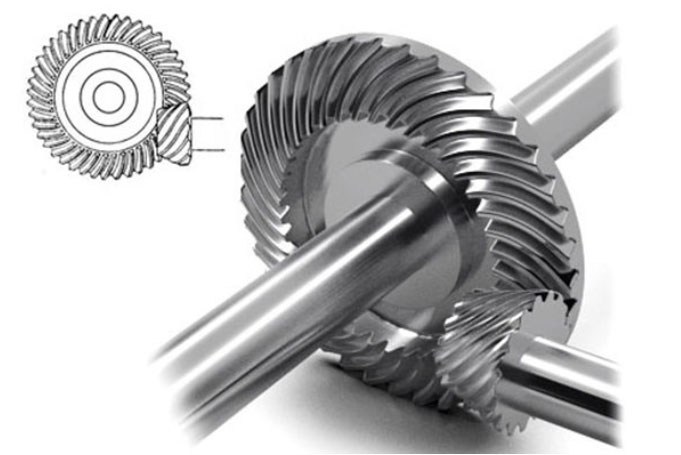
1. Internal Excitations of Hypoid Gear in Drive Axle System
| Excitation Type | Cause | Calculation Method |
|---|---|---|
| Time-varying Stiffness | Gear meshing process with non-integer contact ratio and elastic deformation | Obtain discrete stiffness values from gear pair contact analysis and fit with 8th-order Fourier series |
| Transmission Error | Manufacturing and installation errors, gear thermal deformation, axis angle deviation | Represented by harmonic function and synthesized with Fourier series |
| Impact | Meshing pitch error due to gear error and deformation | Calculate maximum impact force with specific formula |
2. Gear Transmission System Spatial Dynamics Model
| Component | Vibration Equation | Parameters Involved |
|---|---|---|
| Main Gear (Rear End) | mpx1Xp1+cpx1Xp1+kpx1f(xp1,bpx1)+Cpx(xp1+xp2) etc. | mpx1, cpx1, kpx1, bpx1, Fpx1 etc. |
| Main Gear (Front End) | Similar equations as rear end with different subscripts | Similar parameters with different subscripts |
| Driven Gear (Both Ends) | Multiple equations considering different directions and support points | Corresponding mass, damping, stiffness, and force parameters |
| Half-shaft Gear | Complex equation considering multiple factors | Various stiffness, damping, and error parameters |
| Half-shaft Bearing | Multiple equations for different directions | Related mass, damping, stiffness, and rotational parameters |
| Planetary Gear | Equations considering different directions and meshing conditions | Specific mass, damping, stiffness, and error parameters |
| Planetary Gear Axis | Inθn+∑KeRbb(θnRbb-zαj)+Knθn=Tjm | In, Kr, Rbb, Tjm etc. |
3. Vibration Characteristics Analysis
3.1 Comparison Before and After Optimization
| Gear | Vibration Direction | Optimization Effect |
|---|---|---|
| Main and Driven Gear | Vertical | Vibration balance position and displacement amplitude improved, acceleration reduced |
| Axial | Complex motion, better after optimization | |
| Torsional | Good regularity, little change after optimization |
3.2 Influence of External Excitations
| External Excitation | Influence on Vibration | Degree of Influence (Axial, Vertical, Torsional) |
|---|---|---|
| Input Rotational Speed | Increase in vibration parameters, poorer regularity in vertical and axial directions | Greatest on axial, moderate on vertical, least on torsional |
| Loading Torque | Similar to input rotational speed effect | Greatest on axial, moderate on vertical, least on torsional |
4. Vibration Testing
| Test Condition | Test Equipment | Sensor Placement | Test Results |
|---|---|---|---|
| Different input torques and rotational speeds | LMS SCADAS 40-channel high-precision signal acquisition system, PCB_356A26 triaxial acceleration sensor, LMS Test.lab software | 1. Main reducer bottom large bearing position; 2. Middle section top; 3. Back cover; 4. Left casing middle section; 5. Left spring seat; 6. Right casing middle section; 7. Right spring seat | New state has better vibration characteristics, vibration acceleration amplitude and peak number reduced |
5. Conclusions
- Analyzed vibration characteristics of hypoid gear transmission system in drive axle for active control.
- Built and solved vibration model, providing theoretical basis for dynamic design and noise reduction.
- Found influence of input speed and torque on vibration, supporting prediction of vibration response.
- Verified better dynamic performance of optimized samples through testing.
